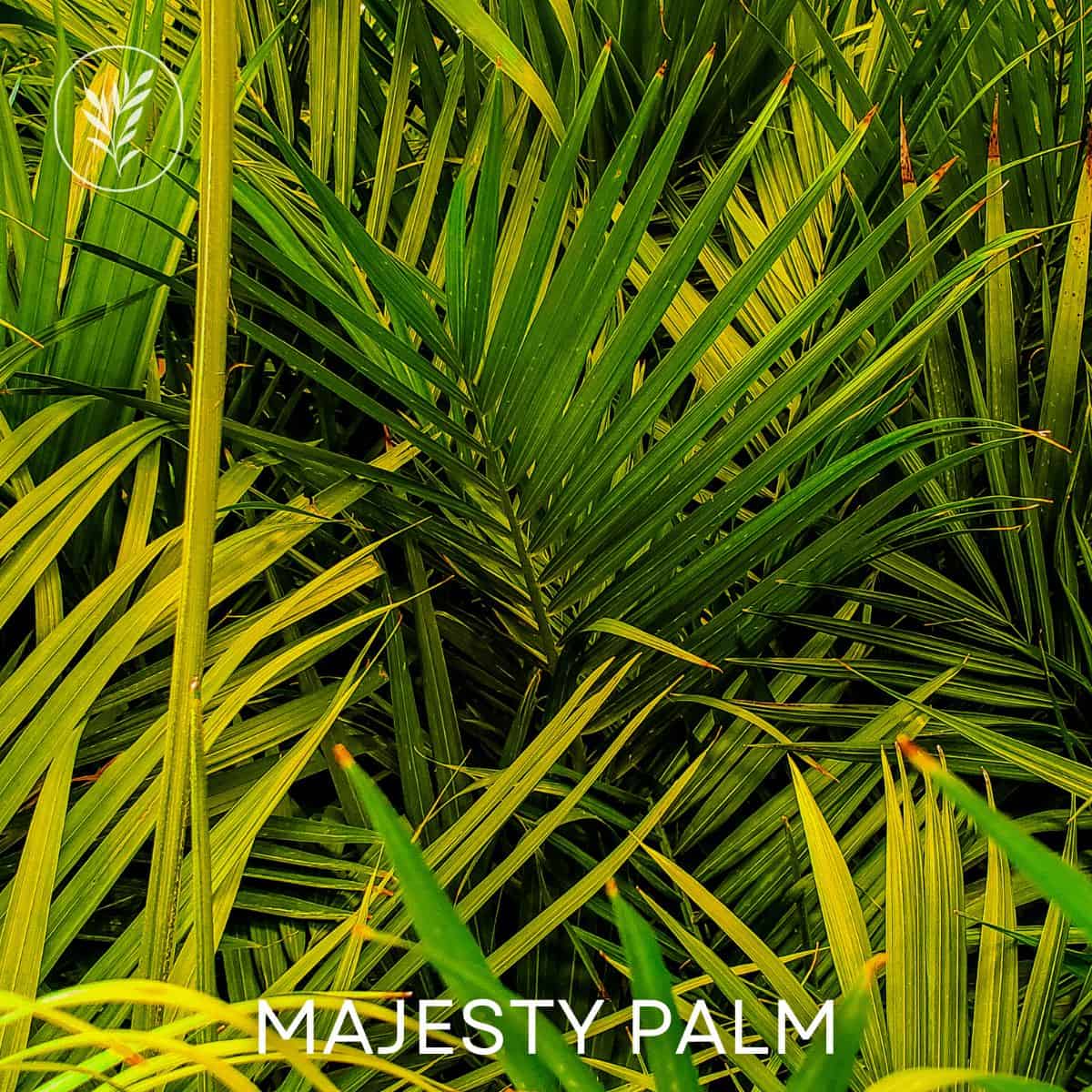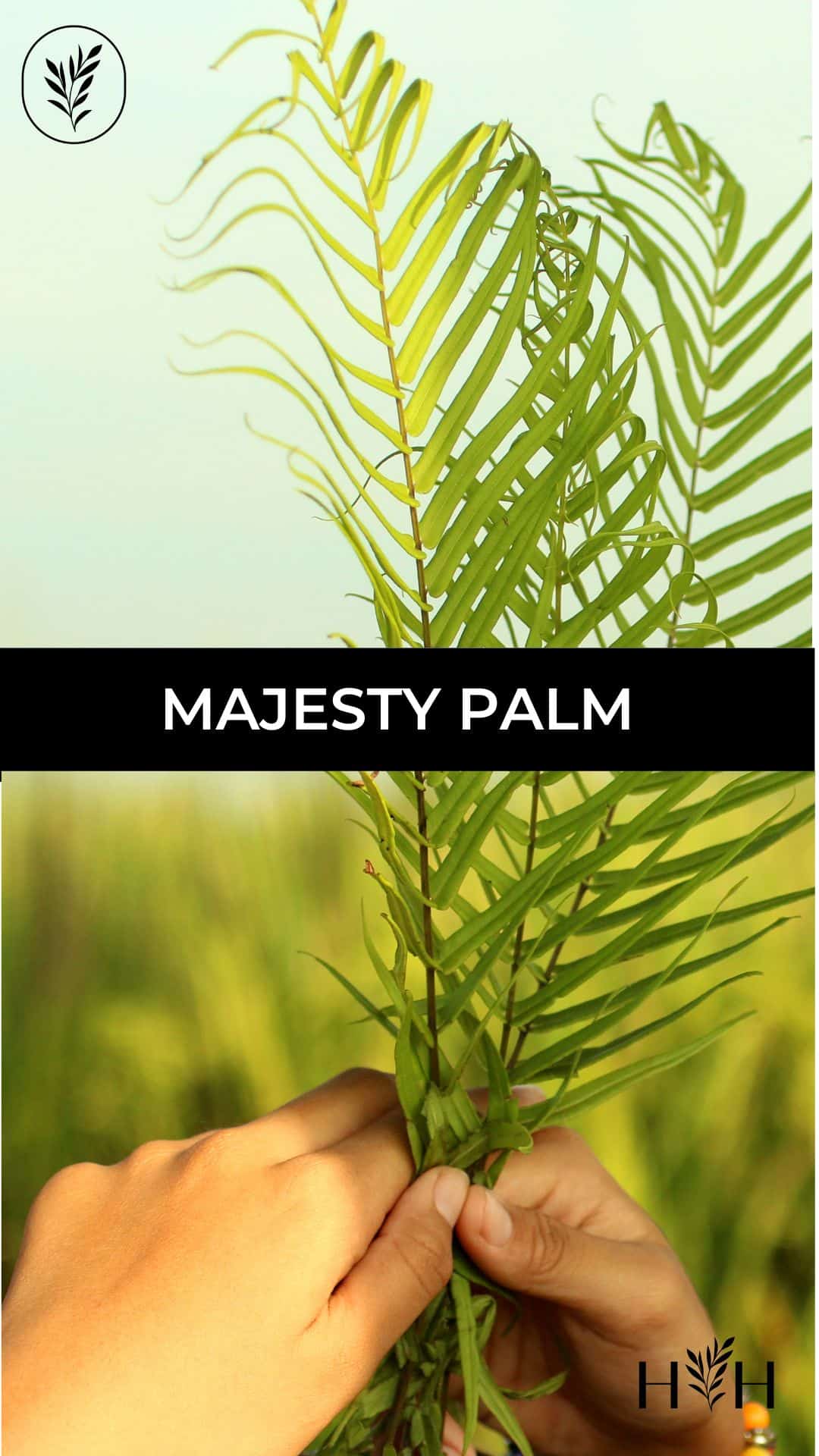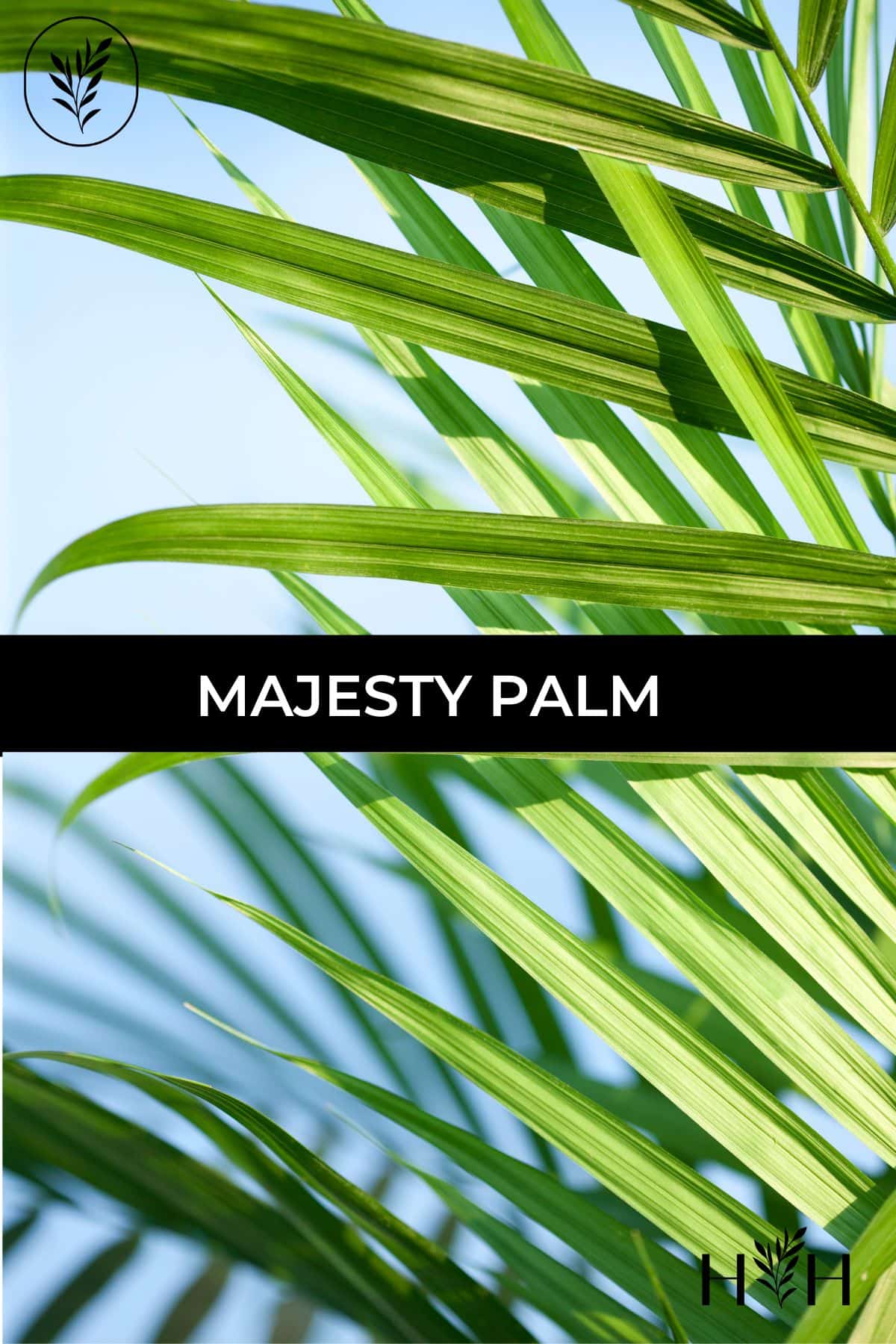Majesty palm plants are commonly seen in houses across the United States. But why are majesty palms so popular, and how do you take care of them?
Majesty palm (Ravenea rivularis) plants are small palm trees often grown in containers as houseplants. This type of palm tree is originally from Madagascar. Majesty palms tend to grow slowly and thrive in low light indoor environments. They are popular due to their attractive fronds and because they require a low level of maintenance.
Now that you know a little bit about what a majesty palm is and why this tree is so popular, you may be wondering how to take care of one that you own. Luckily it’s not too difficult, but there are some things you should know.
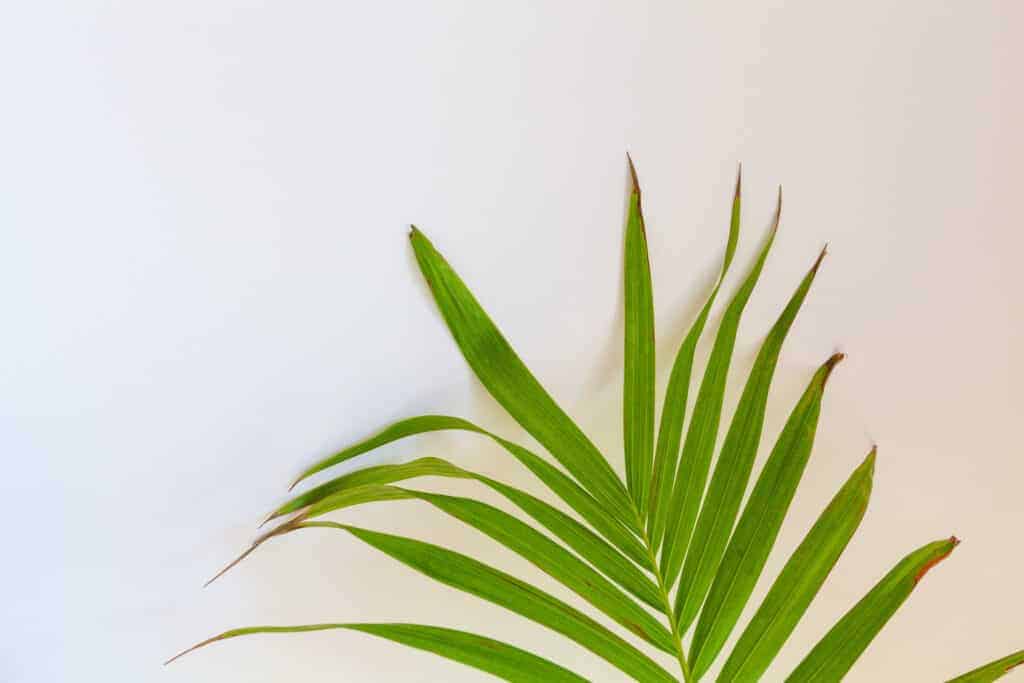
Majesty palm basics
The Majesty Palm, Ravenea rivularis, is a type of palm tree grown worldwide as a container plant. Majesty Palm trees are sometimes called majestic palm or Revena palm trees. Majesty palms grow well in humid growing environments and tolerate low light indoors.
Majesty palms are from Madagascar. They typically grow alongside rivers and thrive in tropical environments. Nowadays, majesty palms are frequently found inside of homes and apartments in the United States, as well as in many businesses.
Majesty palms look very similar to the palm trees we know and love, except they are much smaller than palm trees when they are kept indoors. It has long, feathery green fronds that drape quite gracefully away from the trunk when they are long enough. These trees can grow up to 80 feet tall when they grow outside. However, nowadays they are mainly grown indoors so they only grow to be about 10 feet tall.
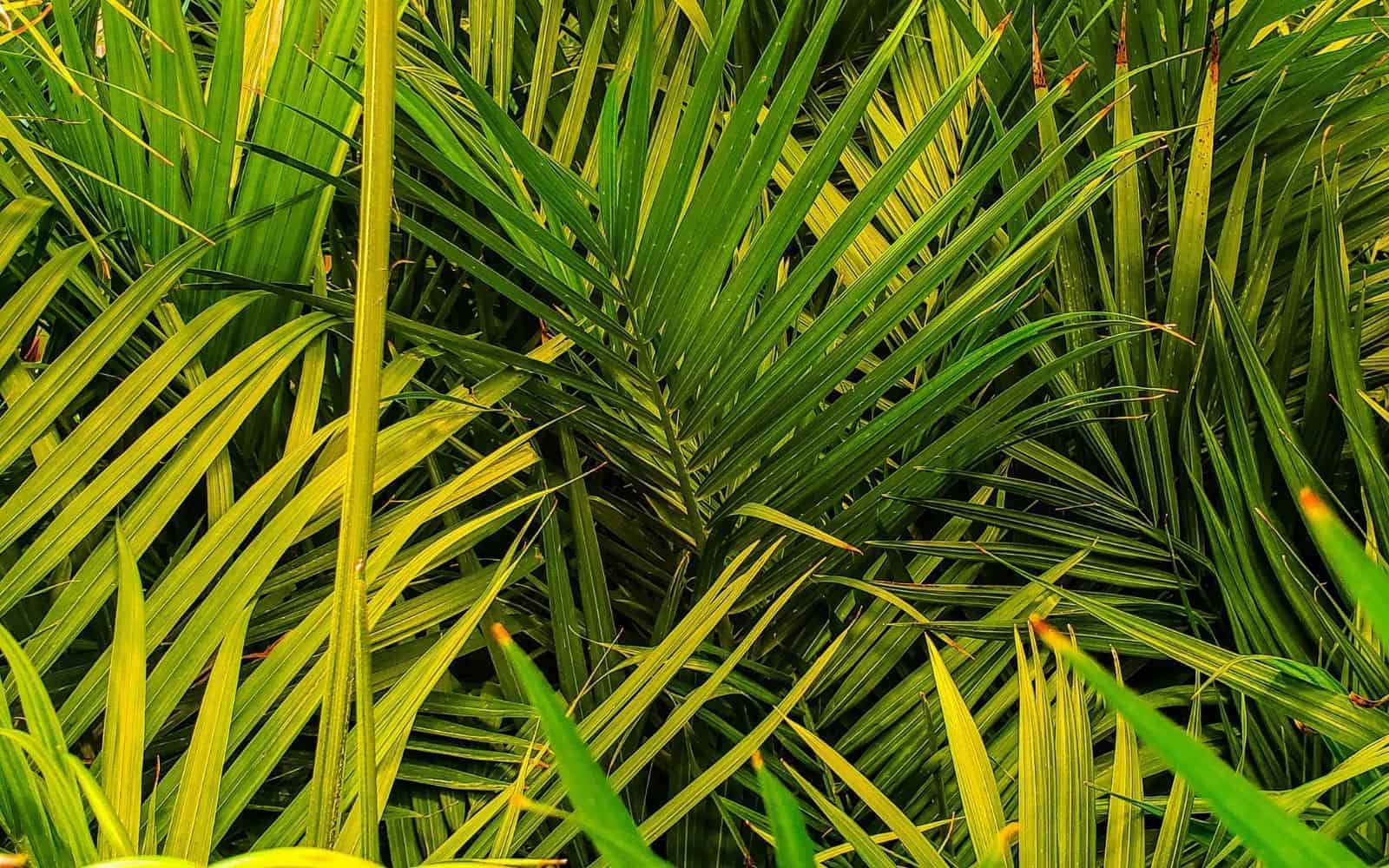
Plant care for majesty palm
Majesty Palm plants are among the lowest maintenance houseplants to care for. These plants do like some light and frequent watering, but are also quite tolerant of less-than-perfect conditions.
Light requirements
Majesty Palm Trees should get 4-8 hours of sunlight each day. This means that if you put a palm next to a window that provides a lot of sunlight, it should thrive and be very healthy. That said, even sunny windows may not provide enough light to help the tree truly thrive. Most indoor-grown palms benefit from supplemental lighting from a plant light (I like the SolTech Pendant Light).
A majesty palm will still grow when it receives very little light, but it won’t grow as well as it would if you had placed it near a sunny window. Plants in low-light conditions should receive supplemental artificial light.
Humidity levels for majesty palm
Majesty Palm Trees need more than just sunlight in order to thrive. They come from a tropical environment, so they need the area they are in to be somewhat humid. They thrive in 65-85 degrees and enjoy the air when the humidity is around 50%.
If you live in an area that is very dry and has almost no humidity, you should place a humidifier somewhere close by to your majesty palm tree, especially if the edges of the leaves are beginning to turn yellow or brown. A whole-house humidifier or large area humidifier is usually best. Try to keep the humidity above 40% if possible, as they really struggle when the air is drier than that.
Watering majesty palm trees
Water majesty palm trees once or twice a week, depending on how hot the temperatures are in the area that you live in. However, majesty palm trees do not need a lot of water in order to thrive, so only water it when the topsoil is completely dry. They are used to hot climates after all!
When you do water your majesty palm tree, make sure that you do not add too much water. Simply add water until the soil is moist but not wet or completely saturated with water. Be sure to check that the soil is draining freely. This is easiest to do when the plant is small, as larger trees can be difficult to maneuver.
Best potting soil for majesty palm trees
Plant your majesty palmr in potting soil that drains quickly and is very lightweight. Cactus soil mixes and houseplant soils are great for planting your Majesty Palm in. Use fresh potting soil to repot your Majesty Palm to avoid transferring soil-borne diseases.
Fertilizing Majesty Palm trees
If you add fertilizer to your Majesty Palm Tree, only do it once or twice a month (depending upon the instructions for the product you choose) during the spring and summer months. Use an indoor tropical plant foods (some are even formulated especially for palms).
Fertilizing can be decreased or skipped in the wintertime. They only actively grow during the spring and summer months, so they don’t need as much fertilizer to grow and thrive in the winter. Here are some more tips about fertilizing majesty palm.
Pruning majesty palm trees
If an entire leaf frond has become brown or yellow, you should remove it from the rest of the majesty palm tree. In order to remove the leaf, cut it off with a pair of scissors or pruning shears near the base of the stem. Do not pull the stem off to remove it because this could damage the surrounding plant tissue.
If there are leaves on your majesty palm that are only brown or yellow on some parts rather than the entire leaf, like at the edges, then cut off the area that has been affected, and leave the rest of the leaf on the tree.
Read more about Majesty Palm care.
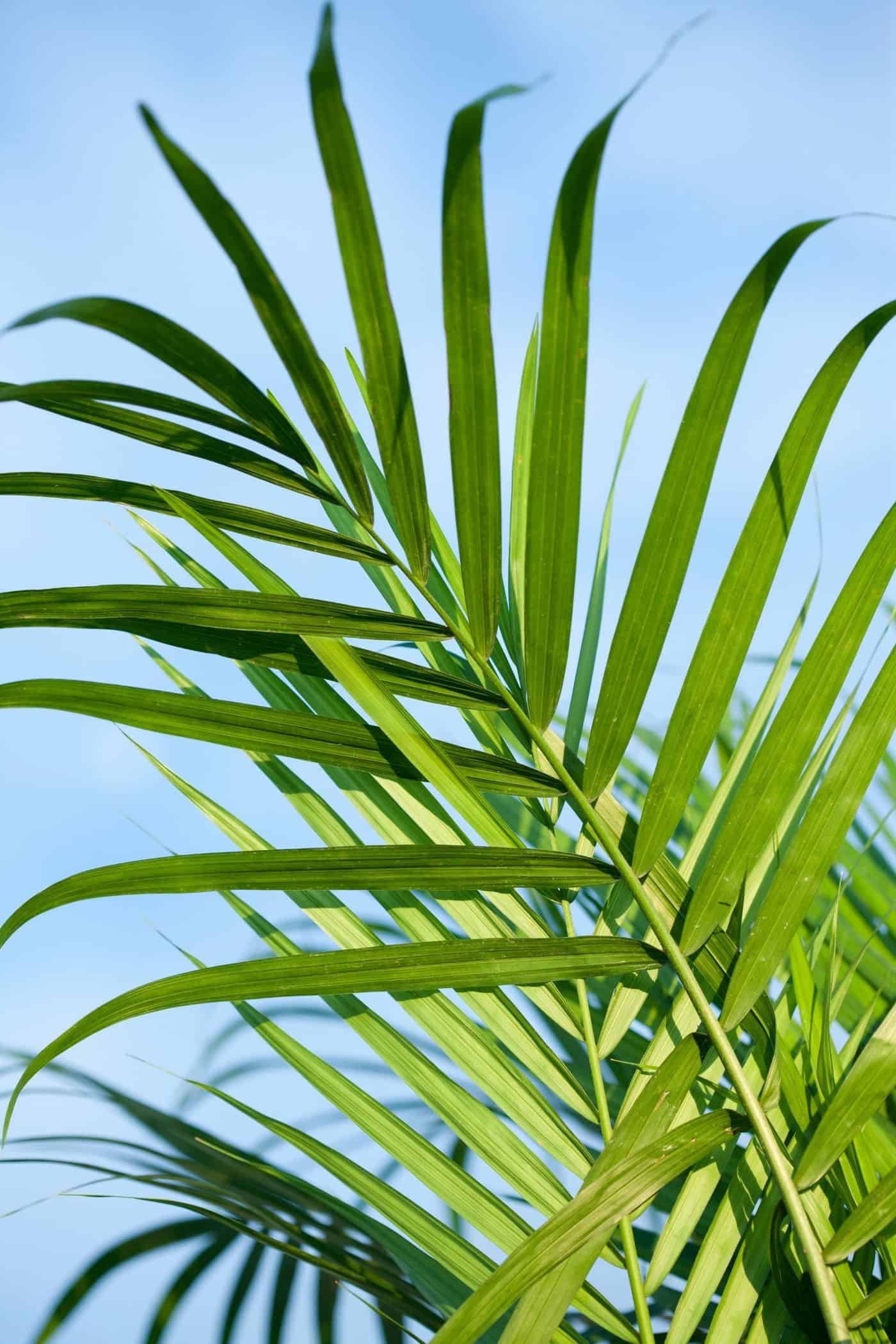
How to repot the Majesty Palm
It is very easy to repot your Majesty Palm Tree as they are very tolerant of being repotted and are not easily damaged during the process. These plants generally need to be repotted once every 2 years.
When you repot your Majesty Palm, remove the tree from its previous pot and place it into the new one. The new pot should be at least 2 inches in diameter larger than the previous pot that the majesty palm was in.
After you remove the Majesty Palm from its previous pot, gently break up the roots so they will grow outwards rather than further into the root ball.
After you place the Majesty Palm Tree into its new pot, add a cactus mix potting soil as well as a little bit of fertilizer into the pot. Make sure the trunk of the Majesty Palm is straight and the roots are not sitting directly against the bottom of the pot. After you fill the pot with soil, lightly pack it. Then put your Majesty Palm Tree where you want it to stay until you need to repot it again.
Pests affecting Majesty Palms
Thread scales, oyster scales, palm aphids, mealybugs, and spider mites often infest Majesty Palm Tree. Luckily, most of these pests are very easy to get rid of with a simple insecticide. If you would like to prevent insects from infecting your Majesty Palm Tree, spray an organic insecticide on it periodically.
If your Majesty Palm Tree has become infected with spider mites, move the tree to a spot that has more humidity than the spot that it usually is in. If you do not want to move the tree, put a humidifier next to it. If you do not have a humidifier, simply spray a spider mite repellent on the leaves and trunk of your Majesty Palm Tree. You can even regularly wash the tree in the shower if that is feasible for you.
If your Majesty Palm Tree has become infected with oyster scales, take a plastic brush and gently brush them off of the trunk of your palm tree. When you do this, make sure that you don’t damage the trunk or bark of the palm tree, as this will weaken it and may cause it to die. After you remove all of the oyster scales from your majesty palm tree, spray it with a gentle organic insecticide.
If your Majesty Palm Tree has become infected with palm aphids, thread scales, or mealybugs, start by removing as many as you can and spray an organic insecticide that targets all of the insects that you found. This should kill any remaining insects, and your Majesty Palm Tree will be able to thrive again and remain pest-free. Some organic pesticides are best applied once every week until the problem is truly gone.
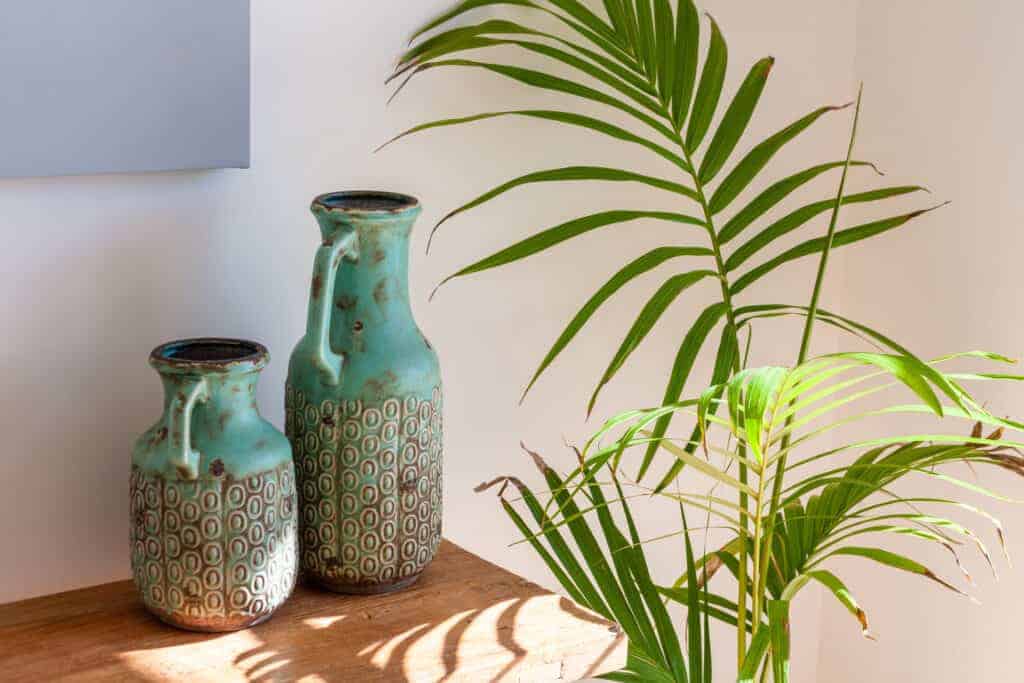
Why are Majesty Palms so popular?
Majesty Palm Trees are very popular because they grow relatively slowly, do not produce a strong scent, grow in areas with low light, require a low level of maintenance, don’t take up a lot of space, are not expensive, and can be put almost anywhere in a home or business facility.
Majesty Palm Trees also do not require a lot of maintenance. They only need to be repotted once every 2 years and only need to be watered once or twice a week. This means that people don’t really need to pay attention to their majesty palm tree and they can do other things with their time.
Majesty Palm Trees don’t require a lot of light to grow and stay healthy. This means that businesses can place them in their lobby, even if there is not a window that provides a lot of light. They can just leave it in the corner, water it a few times a week, and not think about it at any other time while they are working.
Majesty Palm Trees don’t need to be pruned very often in order to be kept under control. Even when they need to be pruned, it is very easy to remove some of the fronds from the rest of the tree and then leave it alone to continue growing. Most of the time, majesty palm trees only need to be pruned when the fronds begin to yellow.
Majesty Palm Trees are popular because they do not take up a lot of space. These palm trees slowly grow upwards rather than out. This means that people can put them in spaces where there is not a lot of space, but there are semi-tall ceilings that can accommodate the growth of the new plant for years to come.
Majesty Palm Trees are not very expensive, especially when compared to other common house plants, which makes them a popular choice for a lot of people. Majesty Palm Trees generally cost $20-$200, depending on how large the tree is and what type of pot you purchase with it. This means that you can find a majesty palm tree that fits into your budget and you will have to spend very little time taking care of it afterward.


